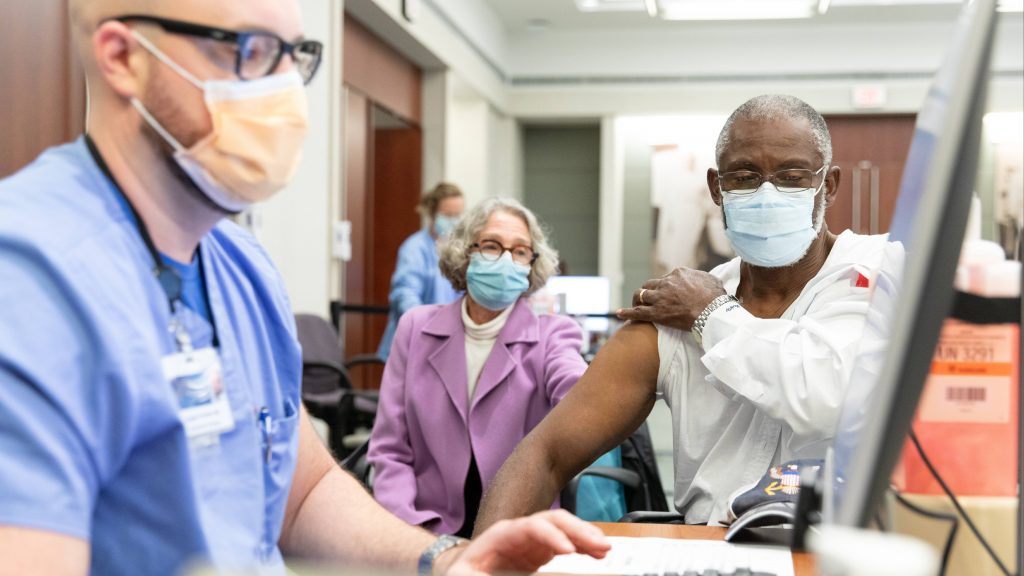
More than 60 million Americans have been fully vaccinated against COVID-19, according to the Centers for Disease Control and Prevention (CDC). The large scale vaccination efforts underway across the U.S. to vaccinate those eligible come at a time health care experts are concerned about people becoming lax about safety precautions.
"We are all worried that there's going to be a fourth wave," says Dr. Abinash Virk, an infectious diseases expert and co-chair of Mayo Clinic's COVID-19 Vaccine Allocation and Distribution workgroup. "We've had three waves already. And each time the waves went down, everyone became very excited and took their masks off and stopped taking all the precautions that we recommended. At this time, it is the same situation."
Dr. Virk says: "We all want to get back to our normal lives. But the recent data has shown that there's a slight uptick in the number of COVID-19 cases. The most worrisome concern we now have is that during the last few days and weeks is that the variants have increased substantially, particularly in the East Coast, the Midwest and the Sunbelt areas. The concern is that the fourth wave may be largely made of the COVID-19 variants especially since many people are still not vaccinated. And that's the reason why we have to continue wearing masks in public, social distance and practice good hand hygiene until substantially more of the US population is vaccinated."
Watch: Dr. Abinash Virk answers questions about concerns about fourth wave of COVID-19.
Journalists: Broadcast-quality sound bites with Dr. Virk are available in the downloads at the end of the post. Please courtesy: "Abinash Virk, M.D./COVID-19 Vaccine Allocation and Distribution/Mayo Clinic."
A goal of the COVID-19 vaccination effort is to reach population immunity, also known as herd immunity.
"What we mean by herd immunity is that most of the population or a large percent of the population is protected against a certain disease," says Dr. Virk. "You can get that from natural infection, or you can get it from the vaccination. Based on the fact that we've had only about 20% of the population vaccinated — although we have had about 30 million-plus people who've had COVID-19 infection — we're nowhere close to what we consider herd immunity. What we consider good herd immunity at a level that's going to be helpful to turn this pandemic around is that about 70-to-80% of the population has to be protected. And we're not anywhere close to that yet."
The good news is that the vaccines are shown to be effective and safe. "What the data shows us is that these vaccines are extremely safe," says Dr. Virk. "Not only that, but these vaccines are also very effective in preventing COVID-19 and particularly preventing people from getting into the hospital or dying. These vaccines have really proven themselves in terms of their effectiveness and their safety."
The CDC offers these tips to help you prevent COVID-19 infection:
- Wear a mask that covers your nose and mouth to help protect yourself and others.
- Stay 6 feet apart from others who don’t live with you.
- Get a COVID-19 vaccine when it is available to you.
- Avoid crowds and poorly ventilated indoor spaces.
- Wash your hands often with soap and water. Use hand sanitizer if soap and water aren’t available.
Related posts:
- Why you should get the first COVID-19 vaccine offered to you.
- What studies show about pregnancy, COVID-19 vaccines.
- Understanding COVID-19 vaccine side effects, why second dose could feel worse.
___________________________________________________
Information in this post was accurate at the time of its posting. Due to the fluid nature of the COVID-19 pandemic, scientific understanding, along with guidelines and recommendations, may have changed since the original publication date.
For more information and all your COVID-19 coverage, go to the Mayo Clinic News Network and mayoclinic.org.
Learn more about: Tracking COVID-19 and COVID-19 trends.








